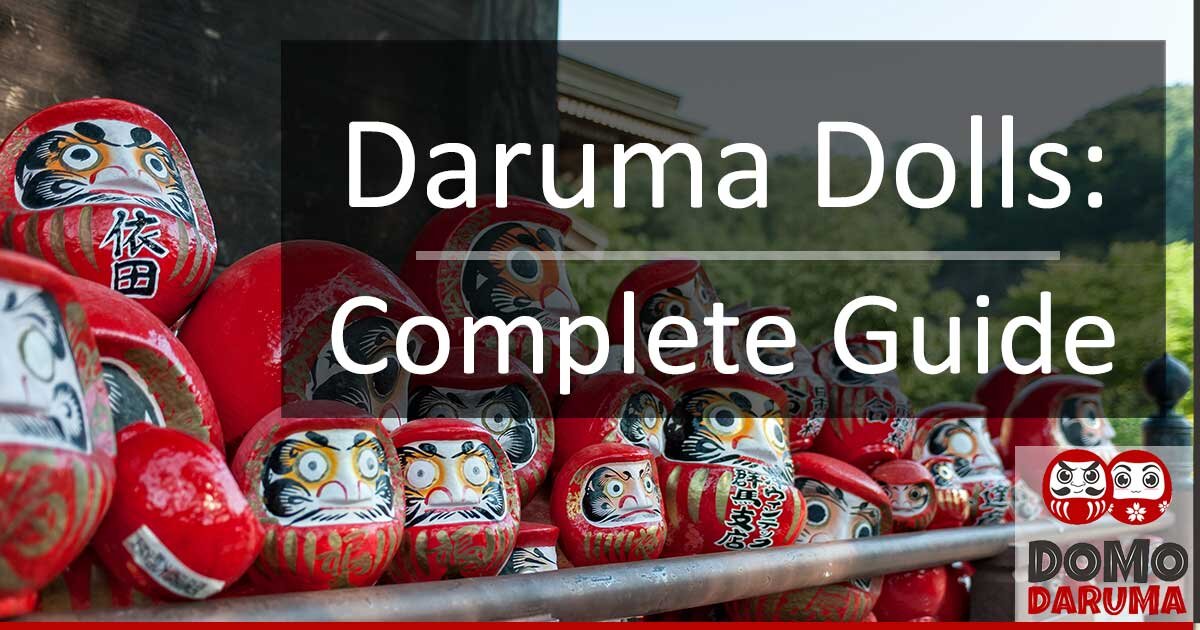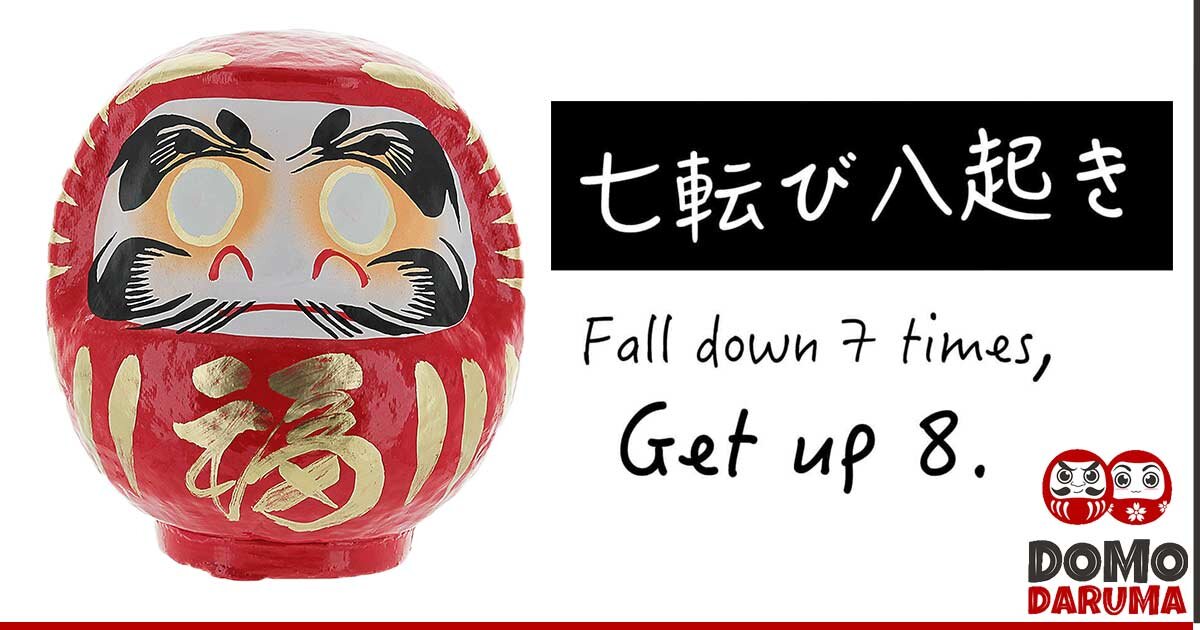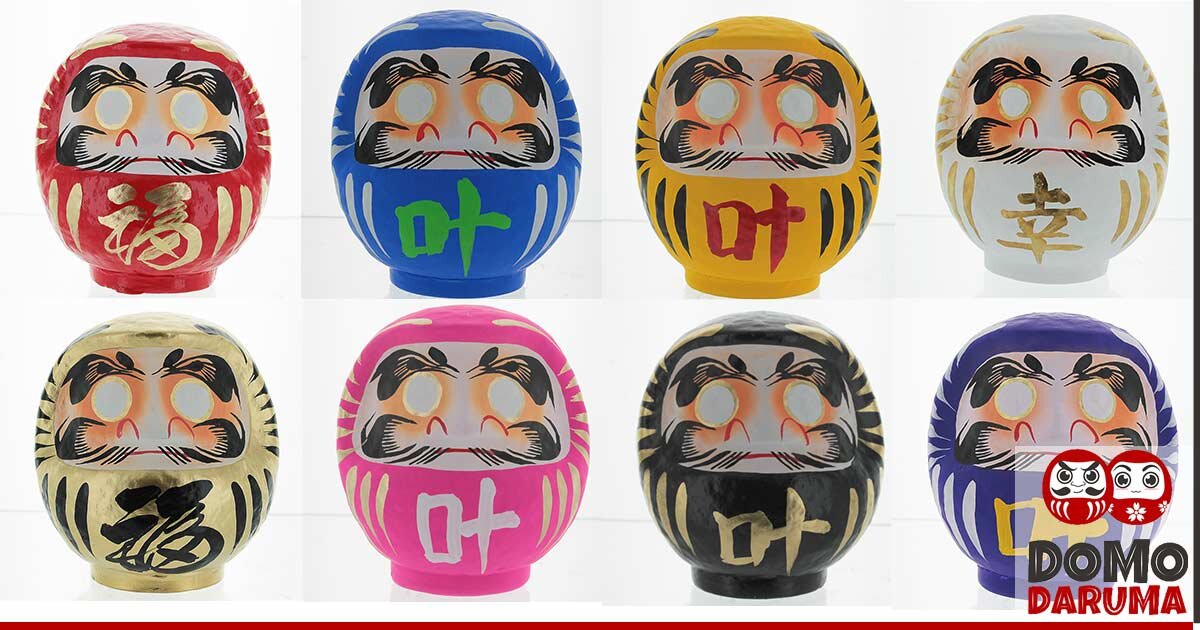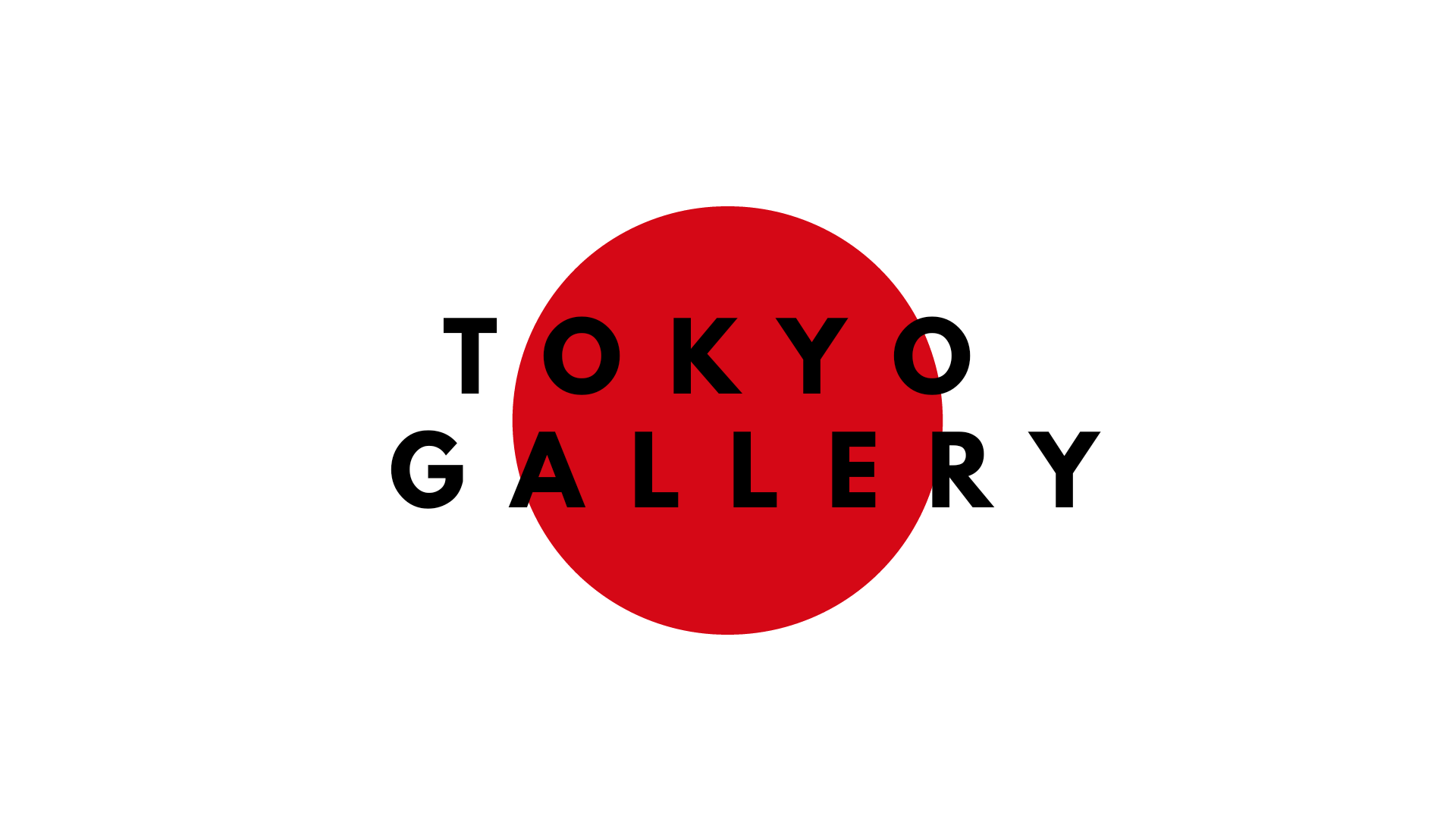What is a daruma doll?

A daruma doll is a traditional Japanese good luck charm for making a wish or setting a goal.
It is typically round, made with paper-mache, and painted by a skilled artisan for the face, body, and other aesthetics.
The eyes remain intentionally unpainted for the owner to begin the process of using the daruma:
-
Have a goal, wish, or promise to fulfill.
-
Paint one eye with a circular dot (either eye is fine, but the daruma’s left eye is suggested).
-
Work towards the goal every day.
-
Once the goal or wish becomes reality, paint in the other eye.
Daruma dolls are ubiquitous in Japanese culture and often found on the shelves or altars in homes, businesses, restaurants, and temples, because auspicious charms are an ingrained part of Japanese fashion and lifestyle.
Other Japanese good luck charms include maneki neko, omamori, omikuji, and senbazuru.
Meaning of a daruma doll

Daruma dolls are constant reminders of what the Japanese call the ganbaru spirit or the ability to persevere.
Life is full of pitfalls, bumps on the road, and false starts. We’ll inevitably stumble, fumble, and fail.
But to stand up, to believe in the process, and to keep moving forward-- the daruma doll embodies the famous Japanese proverb: Nanakorobi yaoki. “Fall down seven times, stand up eight.”
Despite the weariness, long journey ahead, and circumstances--the ganbaru spirit treads forward. Because enlightenment comes to those who pause and appreciate who they were before (the dreamer) and who they are now (the doer).
That’s why daruma dolls have such determined expressions--some even say angry faces. They never give up. Knock them down and they’ll bounce back up.
A daruma doll represents perseverance.
Daruma dolls are part of an expansive family of roly-poly dolls called okiagari-koboshi.
Daruma doll colors explained

Traditional daruma dolls are painted red because of their historical significance (see ‘History of daruma doll and its legend’ section). Modern daruma dolls embrace a variety of colors and designs.
The meaning of daruma colors is up to the user to imbue because there isn’t an industry standard for them. However, to help customers aim for specific goals and wishes, daruma doll makers have given some guidance.
Please note scholars and daruma craftspeople have their interpretation for each color, so view this as ONE interpretation and not fact--although we’ve collected with our best research and efforts.
Red daruma doll
Meaning: Good luck and good fortune.
Recommended for: General wishes.
Gold daruma doll
Meaning: Wealth and financial success.
Recommended for: Anything related to money.
White daruma doll
Meaning: Purity and peace.
Recommended for: Wellness: mental, spiritual, phsycial, etc.
Purple daruma doll
Meaning: Self-improvement and enlightenment.
Recommended for: Building up a new personality or trait.
Blue daruma doll
Meaning: Performance and career success.
Recommended for: New jobs or business ventures.
Pink daruma doll
Meaning: Love and romance.
Recommended for: All things heart.
Green daruma doll
Meaning: Health and wellness.
Recommended for: Being in prime physical condition.
Orange daruma doll
Meaning: Study and learning success.
Recommended for: Better mind, better concentration, and results.
Yellow daruma doll
Meaning: Protection and support.
Recommended for: Friendship and honor in relationships.
Black daruma doll
Meaning: Prevention and bodyguard.
Recommended for: Warding off all evil.
Silver daruma doll
Meaning: Sophistication and social status.
Recommended for: Showcasing a personal or professional transformation.
Unpainted daruma doll
Meaning: Create your own design and purpose.
Recommended for: Releasing the artist inside.
Again, the colors are up to your interpretation, but the guidelines above help when there’s a paradox of choice. For painting your blank daruma dolls, acrylic or watercolor work best, although we’ve seen designs featuring crayon, washi (Japanese paper), dried flowers, and gold-leaf.
Commercial off-the-shelf daruma dolls range in various sizes from miniature size (2.3 inches) to giant daruma (29.5 inches). The most popular size is the 4.7 inch (12cm) model.
Daruma doll design & symbols explained

Because daruma dolls represent perseverance, it’s important to have designs that symbolize longevity.
The eyebrows are styled to resemble cranes, and the mustache/beard is made to look like turtle shells. The crane represents 1,000 years and the turtle shell 10,000 years.
Although the daruma doll may look angry, fierce, or stoic, it is a face of grit as one works towards the goal. Nothing is easy, but also no challenge is impossible.
Both eyes are left blank for the user to fill in one eye after making a wish and the other after the goal is completed. The drawing of the eyes signifies giving life and soul to the daruma by “opening the daruma doll’s mind’s eye.”
The daruma isn’t just a doll. It’s a physical manifestation of your goal, the hands of fate or faith, and everything in between. And it’s keeping you accountable.
So which daruma doll eye should be drawn first?

Although starting with any eye is ok, some say coloring the daruma’s left eye (his left eye from his point of view or his right eye from your point of view) is the proper way.
There are several reasons, one including Japanese seating arrangements where the left position is often considered higher in rank.
However, there’s no rule to which eye to fill in. The intent is to have a goal or wish and be sincere in completing it.
The goal is to have 目が出る (megaderu) or to have luck on one’s side. However, the kanji literally reads to have “eyes open”-- a subtle nod to the daruma doll’s Buddhist roots referencing enlightenment and the person the daruma dolls are based on.
Daruma kanji meanings.
A single artistic kanji covers the navel of the daruma doll.
Although any kanji, letters, and characters can be written, for traditional non-customized daruma, three popular kanji are often used:
福 (fuku): Blessing, fortune, luck, etc.
幸 (shiawase): Happiness, blessing, fortune.
叶 (kanau): To come true, to be realized, to be fulfilled.
Additional kanji can also be written on both shoulders to call out the specific goal or provide more words of encouragement.
History of the daruma doll and its legend
The Man & The Myth

Daruma dolls are based on a sage monk named Bodhidharma who lived in the 5th-6th century. He was known to be highly dedicated to meditation and austerity, which helped grow his reputation.
Like many religious/spiritual figures in history, there is the historical person and their fanciful folklore that grows bigger with every generation.
One of these stories is that Bodhidharma spent 9 years facing a cave wall in deep meditation with his eyes wide open, never blinking. His perseverance for enlightenment was so committed that his arms, legs, and body atrophied and fell by the wayside. Yet his spirit remained undaunted.
Because of this parable, Bodhidharma grew in popularity through China, Korea, Southeast Asia, and finally to Japan.
He’s also credited for introducing Zen Buddhism to China, Shaolin Kungfu, Zazen meditation, and green tea. So that’s a decent resume.
In Japanese History
In Japan, the first daruma dolls were charms made to protect children from smallpox and measles during the start of the Edo period (early 1600s). A vengeful demon was believed to be the cause of the infliction.
Fortunately, the smallpox devil was afraid of the color red; therefore red daruma dolls were displayed openly with the belief that red absorbs red. This spurred the magical and mythical abilities of daruma dolls.
Other theories suggest daruma dolls' red color represents fire, blood, and celebration because it’s an auspicious color in many Asian cultures.
Regardless of the red color origin story, daruma dolls evolved from protection against smallpox to protector of children to good childbirth to good harvest and now to good luck.
Farmers in the 17th-18th century are credited for establishing the supply and demand for the modern daruma doll. The dolls were good luck charms for a bountiful rice harvest. They were usually made of wood by Buddhist monks.
Eventually, the farmers were taught to make their own daruma dolls from molds. During non-busy seasons, they crafted daruma to sell as a side job. Fast forward two centuries to today, now daruma dolls are made from paper mache and have moved from child protection to all-around good luck.
The Hidden History
With the ability to recover or “bounce back up with such vitality,” daruma was memed with sexual representations during the Edo period by the lower class.
Satirical craftspeople made daruma dolls in phallic shapes.
Prostitutes were called daruma for their ability to “tumble down” and get a “raise” out of their customers.
Artists reimagined daruma as a woman, a prostitute, and cross-dressing with the undertones that daruma could swing both ways.
Daruma is truly a they for all people.
Despite the satire, female daruma doll became part of the mainstream collection with hime daruma (princess) and anzen daruma (safety) given as talismans for pregnant women for an easy and healthy birth.


